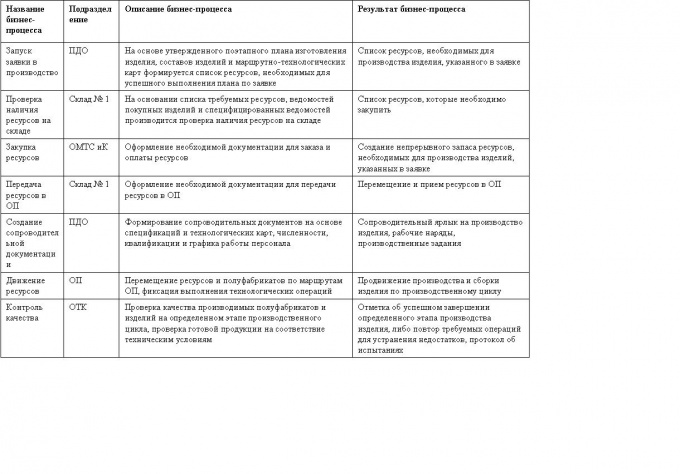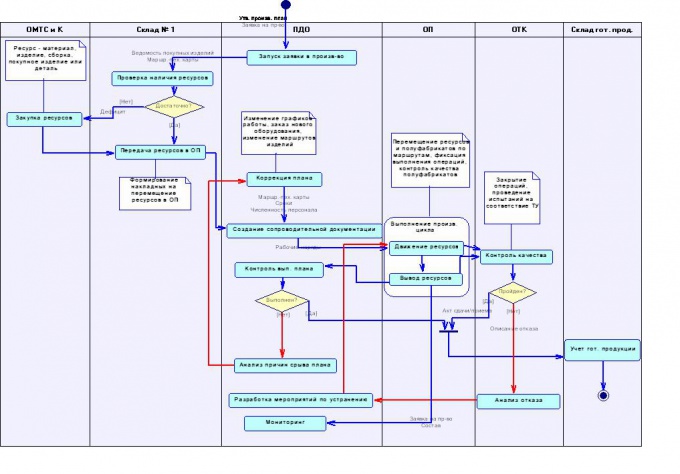You will need
- CASE-tool that allows to formalize business process in a graphical notation.
Instruction
1
The first is to briefly and accurately to formulate the name of the described process, which should be clear and reflect the overall gist of the sequence of actions constituting a business process. For example, instead of applying for the manufacture of the product in production and control its execution is called a process of "Control of manufacture".The second is to properly divide the whole described process into smaller ("atomic") task or function, the sub-processes and determine the sequence of their execution. With such partitioning of the described process will be a top-level process. The level of detail top-level process may be different, but should be adequate for understanding the audience that will use your description.
2
To describe a business process in several ways. The most popular of them - graphic, with charts, in different notations (the notation is a set of symbols to represent something).
The most common types of notations for describing business processes is IDEF0, BPMN, EPC (ARIS), etc.
As example, look at the diagram, made in BPMN notation (Business Process Modelling Notation) with the help of CASE-means PowerDesigner (Fig.1). The main elements in the diagram are:
1. "Process" (feature) - rounded corners rectangle;
2. A transition arrow connecting processes;
3. "The decision" - the diamond contains a question that can be answered only "Yes" or "No";
4. Conditions - text expression in which the transition from one function to another. The conditions are always enclosed in square brackets. It is sometimes useful to break up your figure on the "Track" - vertical or horizontal sections indicating units of the enterprise or employees, responsible for performing a specific function. In this case, the icon of this function needs to be within your section. In addition to these elements, the diagram may also contain a list of data that are inputs or outputs of the process, as well as links to rules or regulations under which runs the function. An example description of a business process "Control of manufacture" shown in Fig.1. It is easy to see that this diagram is very similar to the block diagram of the algorithm for solving the problem.
The most common types of notations for describing business processes is IDEF0, BPMN, EPC (ARIS), etc.
As example, look at the diagram, made in BPMN notation (Business Process Modelling Notation) with the help of CASE-means PowerDesigner (Fig.1). The main elements in the diagram are:
1. "Process" (feature) - rounded corners rectangle;
2. A transition arrow connecting processes;
3. "The decision" - the diamond contains a question that can be answered only "Yes" or "No";
4. Conditions - text expression in which the transition from one function to another. The conditions are always enclosed in square brackets. It is sometimes useful to break up your figure on the "Track" - vertical or horizontal sections indicating units of the enterprise or employees, responsible for performing a specific function. In this case, the icon of this function needs to be within your section. In addition to these elements, the diagram may also contain a list of data that are inputs or outputs of the process, as well as links to rules or regulations under which runs the function. An example description of a business process "Control of manufacture" shown in Fig.1. It is easy to see that this diagram is very similar to the block diagram of the algorithm for solving the problem.
3
A graphical description of the process can also be supplemented with a textual description of its functions and subprocesses in the form of table containing following columns: the name of the process unit (process owner), a description of the process, the result of the process. An example of such descriptions is shown in Fig.2. If it is assumed further optimization of the described business process, the table can add another column with a description of the challenges or disadvantages of running on the moment functions of subprocesses.

Useful advice
Always follow the rules of the selected graphical notation of business processes.




